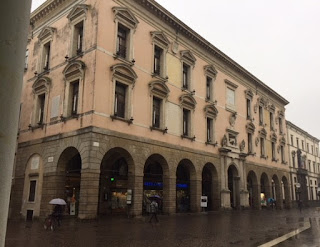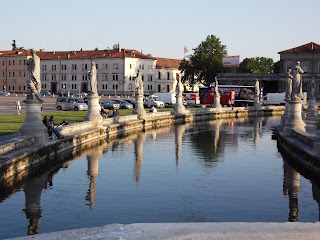Research pioneer known as “Father of Embryology”
 |
| Girolamo Fabrizio spent much of his academic life at the University of Padua |
Fabrizio, who designed the first permanent theatre for public anatomical dissections, advanced the knowledge of the make-up of the human body in many areas, including the digestive system, the eyes and ears, and the veins.
But his most significant discoveries were in embryology. He investigated the foetal development of many animals and humans and produced the first detailed description of the placenta. For this he became known as the "Father of Embryology".
Fabrizio spent most of his life at the University of Padua, where he was a student under the guidance of Gabriele Falloppio, who discovered the tube connecting the ovaries with the uterus that became known as the Fallopian tube.
He succeeded Falloppio as chair of surgery and anatomy, holding the post from 1562 to 1613 and building a reputation that attracted students from all of Europe.
Among his pupils were the English anatomist William Harvey, as well as Giulio Casseri and Adriaan van den Spiegel, both of whom went on to become significant anatomists in Italy. Indeed, both also occupied the chair of surgery and anatomy at the University of Padua.
| The Teatro Anatomico at the University of Padua was designed by Girolamo Fabrizio |
He was the first to identify the membranous folds that he called "valves" in the interior of veins, which are now understood to prevent retrograde flow of blood within them.
Fabrizio also described the cerebral fissure separating the temporal lobe from the frontal lobe of the brain, although it is only recently that he has been credited with the discovery.
 |
| The statue of Girolamo Fabrizio in his home town of Acquapendente |
The technique may have been used for the first time by the surgeon Marco Aurelio Severino during a diptheria epidemic in Naples in 1610.
Fabrizio died in Padua in 1619 at the age of 82. There is a monument to him in his home town of Acquapendente.
 |
| The castle at Torre Alfina, near Acquapendente |
Acquapendente is a medieval town in northern Lazio, about 140km (87 miles) north of Rome, just under 30km (18 miles) west of Orvieto. It takes its name - literally translated as ‘hanging water’ - from the small waterfalls that flow into the Paglia river. Among the main sights is the Duomo di Acquapendente, which developed from a former Benedictine monastery, developed in the 12th century. A short distance from Acquapendente is he castle of Torre Alfina, the central tower of which was built by the Lombard king Desiderius.
 |
| Palazzo Bo, the historic home of the University of Padua |
The founding of the University of Padua is officially recorded to have taken place in 1222 but this was actually the first time it was mentioned in an historical document, which means it is certainly older. It was formed when a large group of students and professors left the University of Bologna in search of more academic freedom. The first subjects to be taught were law and theology.
Also on this day:
1470: The birth of the poet Pietro Bembo, lover of Lucrezia Borgia
1943: The birth of the veteran singer Al Bano
Home




